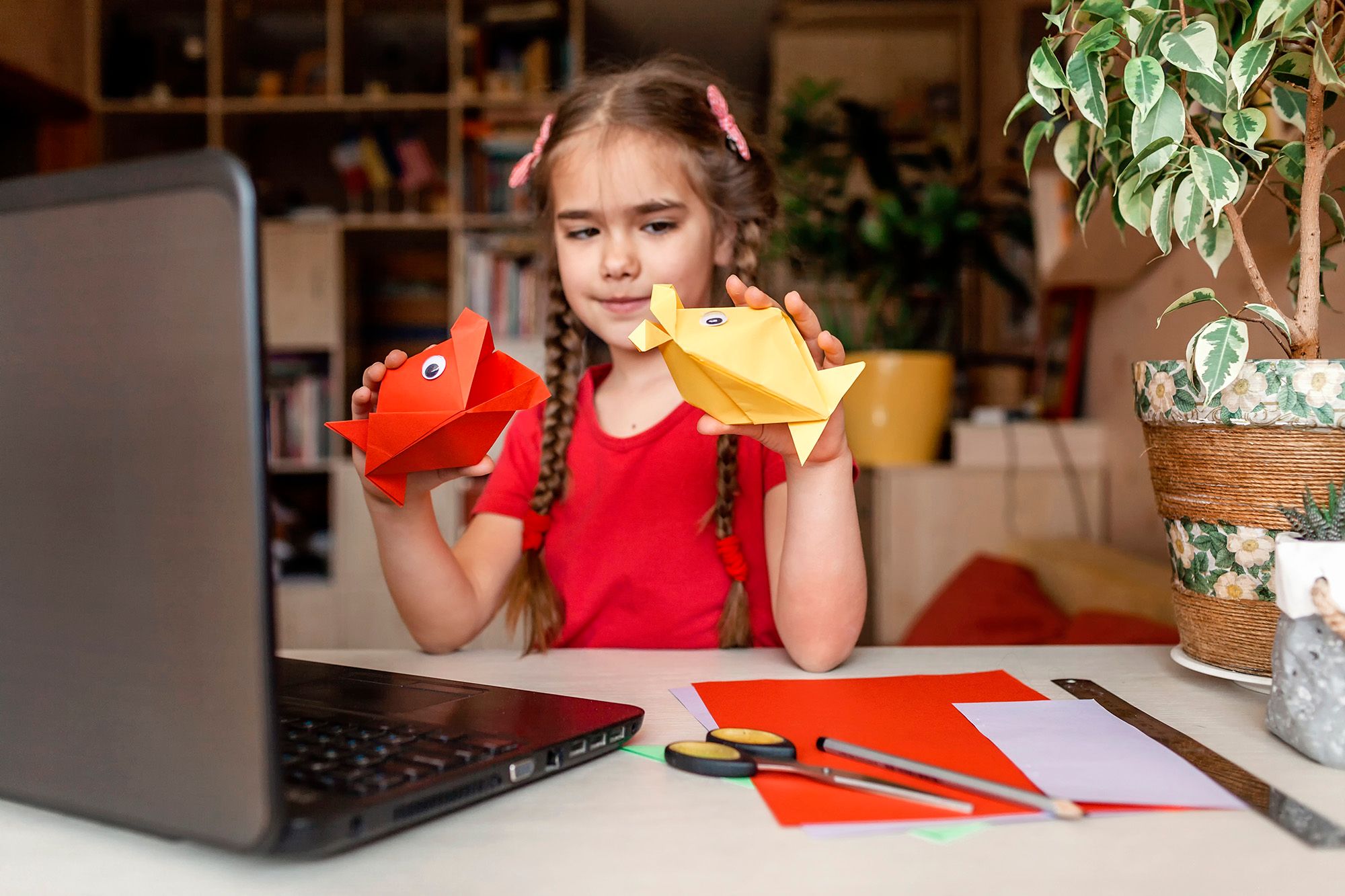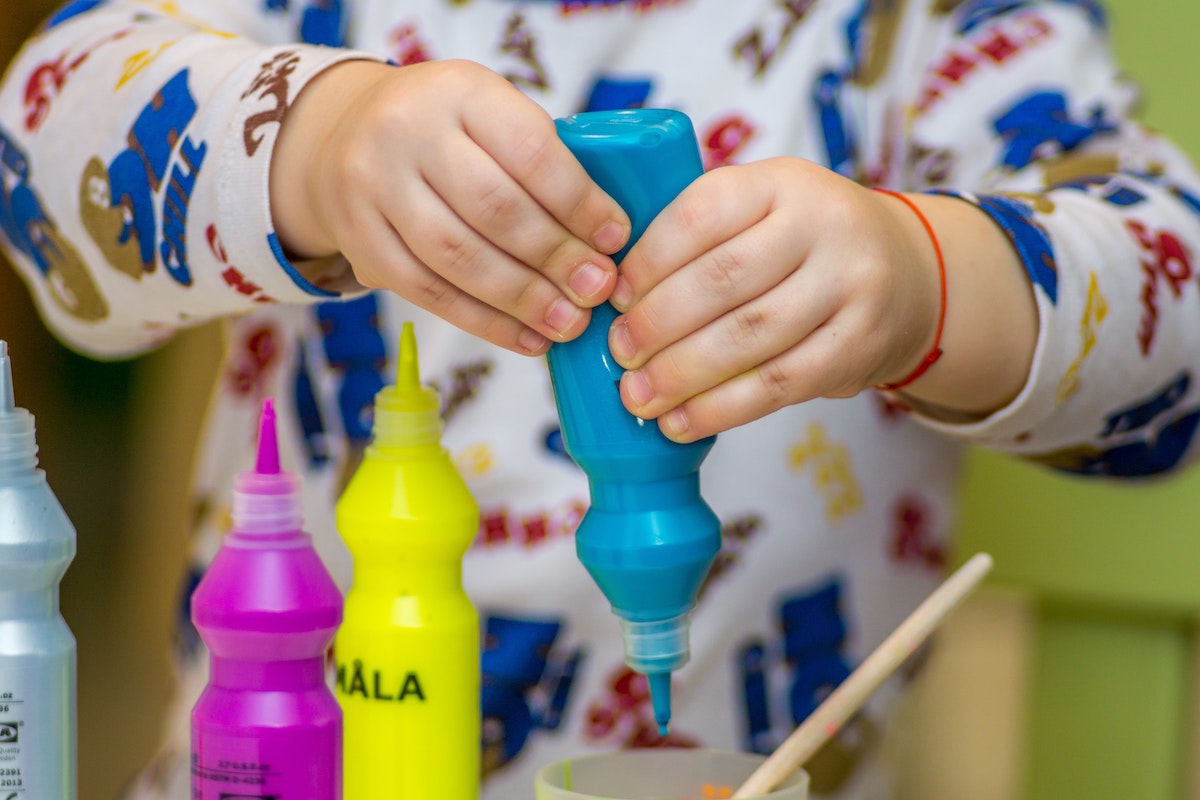Art therapy is an approach to mental and behavioral health therapy that uses art-making as a vehicle for expression and tool to improve physical, cognitive and sensory-motor functions. Art therapy is facilitated by masters-level clinicians – professional art therapists – who follow a scope of practice and adhere to defined ethical standards.
What are the benefits of art therapy?
Art therapy is an effective therapeutic intervention to target underlying mental and behavioral health issues. For individuals experiencing disorders like depression, anxiety, cognitive impairment and autism, studies show that art therapy can release stress and alleviate suffering from symptoms by lowering anxiety, regulating behaviors, and building social skills.
Art therapy has also proven highly effective at helping patients foster self-awareness and self-esteem. Through art-making, participants are more likely to open up and share feelings, views and experiences – which helps improve self image, relieve stress, promote emotional resilience, and resolve conflicts.
Why is art important for kids?
Art encourages children to use their imagination in new ways, helping them improve their creative problem-solving abilities. Making art and exploring their creative process is especially beneficial for children who have difficulty communicating their feelings verbally. Art allows children the freedom to explore ideas and express emotions. Art can also help children learn coping skills, develop fine motor skills, improve hand-eye coordination, and boost self-esteem.
For parents, art-making is also a great way to give your child space to share and communicate.
Art Therapy Activities at Home
Whether you're using art therapy for anxiety, to build self-esteem or just as an artistic tool to foster better communication between you and your child, remember to keep it fun and to let your child take the lead.
Here are just a few fun ideas for at-home art therapy activities.
Art Therapy activities for elementary and preschoolers:
1. Collect rocks outside.
Put them in the toaster oven at 120℉ until they are warm to the touch. Break up crayons and melt the pieces on the rock. Between the multi-colored melting wax and the smell, you're not just creating art, but giving them a full sensory experience.
2. Activate their senses with a tactile finger painting experience.
Take shaving cream and add food coloring. Let your child smear it onto heavy paper, then let it dry to create a unique marbled effect. Take uncooked rice and “shake in” rubbing alcohol and food coloring. Once it's dry, dump it into a plastic bin and let your child dig in – it's a great sensory bin.
Mix cornstarch and water together to create the ideal consistency for oobleck. Add jello powder (citrusy scents are good for activating the senses). Let your child manipulate the goop, see how it morphs from solid to liquid. Talk about how it feels, what they smell, etc. This is a great activity if your child is tactile defensive.
Art Therapy activities for any age:
1. Get outside
Encourage your child to look for a rock or other natural materials that speaks to them. Incorporate that object into a collage or have them sketch it – make it the foundation of any type of art experience.
2. Sit down with your child for a Round Robin art Therapy session.
Each of you starts a drawing, then after several minutes, swap artworks to let the other person take over and continue drawing, and continue exchanging pieces every few minutes. This is a great activity for non-verbal communication and expression, and it can lead to some fun little drawings!
“Remember that the art your child creates is a gift and don't try to enhance it,” says Susanne Graf, ATR-BC and lead art therapist at HYM. “Round Robin art is a terrific exercise in developing a broader perspective. It teaches parent and child alike to take in and accept what another person is doing; it allows you to play off each other and more often than not, the interplay can become really fun and meaningful.”

Self-directed art therapy techniques for kids
Sometimes, your child or teen might benefit from quiet time making art alone. This exercise can help your child decompress, find calm and allow for confidence building. Many coloring books promote recreation and self-care but remember these are not replacements for actual art therapy.
Here are some ideas to help you support your child through beneficial self-directed art therapy techniques.
1. Coloring Books
Find a coloring book or print out some coloring pages from the internet. Another great art therapy idea is creating an illustrated dream journal. Make sure to have plenty of crayons, markers, colored pencils, and other art supplies on hand.
2. Drawing Prompts
If your child is feeling stuck, try giving them an art therapy prompt such as "Draw a picture of your favorite thing to do" or "What does happiness look like to you?"
3. Sculpting
Play-doh, clay, or even art materials like modeling balloons can be used to create small sculptures. This is a great activity for working on fine motor skills and using imagination.
4. Painting
Encourage your child to experiment with different colors and mediums such as watercolors, tempera paints, or even finger paints can promote relaxation. Art therapy doesn't require abstract painting, so encourage your child to try a self portrait, a still life, or just about anything.
5. Collage
Gather old magazines, newspapers, wrapping paper, or any other materials you have around the house to make a collage. This is a fun way to create art with recyclable materials.
6. Photography
Taking pictures with a Polaroid camera, cell phone or tablet can be a fun way to document the world around them. You can even turn this into a scavenger hunt by coming up with a list of things to take pictures of.
7. Zentangle Drawing
This is a type of drawing that uses repetitive patterns to create images. It can be very relaxing and is a great way to unwind.
8. Nature Art
Collect leaves, sticks, flowers, or any other items from nature to create a collage or sculpture. This is a great activity to do if you are feeling connected to the outdoors.
9. Mask Making
Making a mask is a fun way to explore different identities and positive and negative emotions. Many art therapists use this technique as it can be a very cathartic experience. You can use paper mache, or even recycled materials to make your mask.
What happens in the brain when you create art?
The practice of art-making is inherently calming and entertaining, but it's also really good for everyone's brain. Any way you express visual creativity – whether it's drawing, sculpting, making a scrapbook or decorating a room – stretches your mind and gives you new ways to communicate.
Making art can activate the reward center of your brain, lower cortisol levels and, as a result, stress. You can use creative expression to explore an unfamiliar feeling, express anger or sadness, or just experience joy.
Art is a visual representation of your feelings and ideas
Creating art is a great way to help your child process their feelings. If your child is feeling overwhelmed, angry, or sad, get them an art journal and suggest creating drawings of what's going on. Art can help them to externalize their feelings and start to make sense of them.
If your child is going through a major life change, such as a divorce or grieving the death of a loved one, art therapy exercises can also be a helpful tool. It can provide them with a way to express their grief and begin to work through their sadness. Creating a visual representation of their thoughts or feelings can help your child learn how to cope with difficult situations.
Art can also be used as a preventative measure to relieve emotional stress. If your child is feeling stressed or anxious, making art can help them visually express how they feel and overcome emotional stress before it becomes overwhelming.
Art Therapy Techniques Can Bring Family Members Closer
-
“When a parent and child make art together, it slows everything down. It creates an opportunity to share an activity that, by its very nature, is creative and fun, open and accepting. Most importantly, it creates space and quiet where your child can feel supported and heard.”
“We spend so much time as parents shepherding our kids through everyday activities – whether it's driving them to school, eating dinner, homework or bedtime.”
-
It's important to remember, however, that art making at home is very different from art therapy online with a credentialed professional art therapist.
Art therapy is a psychotherapeutic relationship that applies psychological theory to the creative process.
-
“If a child is struggling with a mental or behavioral health disorder, working with an art therapist can be an important part of the overall treatment plan,” adds Graf. “However, there are ways to use art at home to support therapeutic goals or give your child another tool or coping mechanism to help in times of distress or angst.”
“As adults, most of us are starved for visual expression,” comments Graf. “Too often, when a child engages in art, parents take over and limit their child from freely expressing their own voice and creativity. It's important to sit back, let your child struggle with something. Even if their cut-out or drawing isn't what you'd want from yourself, celebrate that. Give them the time and as much space as they need to build confidence and accept themselves. ”
-
The most important advice Graf offers parents when it comes to making art together with their child? “Put your phone away and be 100% present.”
